BIG FISH
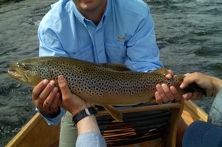
I have a confession – I never have been a big fish fisherman. Over the course of my years throwing flies into various types of water I have hooked and landed a few big fish, but as a matter of course I don’t spend time trying to catch them. [The fish above is not a fish that I caught] Anglers that target big fish spend endless hours trying to catch one memorable fish and I would rather spend those same hours hooking and landing a number of lesser fish. It’s really all a matter of prospective.
I was fortunate to know the late Joe Brooks. Joe was one of the true pioneers of modern fly fishing techniques, and he was fishing editor of Outdoor Life and in my youth I eagerly devoured each issue and each article that he wrote. Joe was a no-nonsense angler, and his angling advice was, above all else, practical and down to earth.
Joe was a prolific writer and Saltwater Fly Fishing, written by Joe and published in 1950, was one of the earliest books published exclusively on the subject of saltwater fishing with a fly. For a number of years Joe held the world record for a striped bass of almost thirty pounds taken on a fly in the late 1940’s. In 1958 he published his Complete Book of Fly Fishing, which was a primer for many of us. My own copy was purchased in 1964 at an outrageous cost of $4.95 for a hardcover book. It was one of the first books in my fly fishing library. His last book Trout Fishing published in 1972, just two years before his death, has a very nice personal inscription inside the front cover. This book is filled with color illustrations of happy people with large trout caught on flies.
Joe’s advice for catching big fish – use big flies. In his last book he wrote the following:
“One of my favorite ways to work a river with bucktails and streamers on these fall days when there are few other anglers on the river, so that moving along is no problem, is to choose a pal and select a stretch of river we would like to fish. We drive one car to the spot where we plan to end the day and leave it there, then in the other car go upstream as far as we want, and fish our way down, alternating pools or fishing the larger ones together. It’s the same procedure as used in floating a river, only you do it on foot. If you carry a lunch in the back of your fishing vest, you are all set for the day and can cover a lot of river without having to look ahead to the long walk back to your car at the end of the day when you are tired. We often cover three or four miles in a day’s jaunt, with plenty of time to fish each pool. At the end, we both hop into the car that awaits us there, and drive back and pick up the other car. For the past 10 years this has been an annual ritual for Dan Bailey, his partner, Red Monical, and myself, on the Yellowstone River. We have had many wonderful days, taking trout over five and even six pounds, and lots of others not so big. We always use streamers and bucktails as we are after extra-big ones, and we all agree that a big streamer or bucktail is what the doctor ordered for those trout.” [Trout Fishing, 1972, pg. 199-200]
This was marathon fishing, covering, on foot, three or four miles of the Yellowstone throwing big flies for several hours. The streamers and bucktails that they used ranged in size from relatively ‘small’ 6’s and 8’s,’up to 2’s and 4’s tied on 3 and 4x long streamer hooks. In his list of basic western streamers and bucktails he lists muddler minnows in sizes 10, 12 and 1/0! All the other streamers and bucktails that he lists are in sizes 2’s and 4’s. When was the last time you used a 1/0 muddler minnow?
After Joe died his widow, Mary Brooks, gave me several boxes of the flies that Joe had used. [Joe did not tie flies but had them tied to his specifications] These included many of the large streamers that he had used on the Yellowstone and flies that he had used for the salt water and for Atlantic salmon. All of flies are in large sizes.
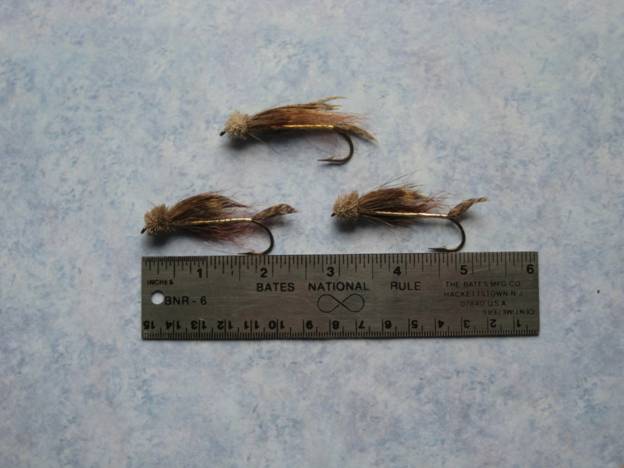
Big Muddler Minnows
In my early years in Montana during the fall of the year I spent quite a few hours fishing big streamers and bucktails on the Yellowstone and Missouri Rivers. The technique was to select a pool and, starting at head, make a series of cast starting relatively close with each cast a bit further out. Once that piece of water was covered you would take a few steps downstream and repeat the procedure until you had covered the entire length of the pool. Fishing such large flies is hard work, and the size of the flies limits the size of the fish that you hook. On a good day you might hook two or three fish, but on many days it was entirely casting practice. After a few years I retired the shooting heads and big flies that I fished with them.
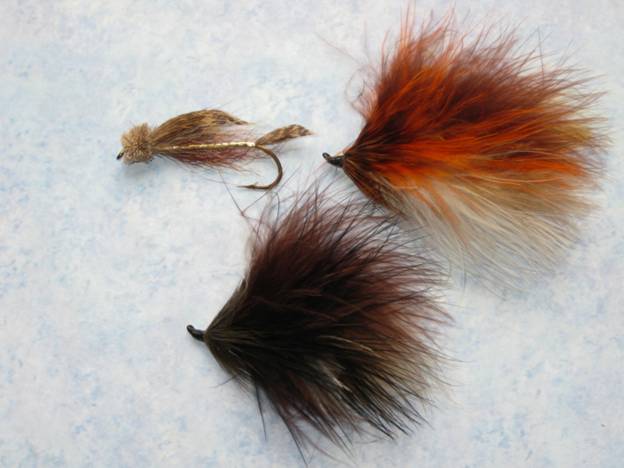
A Big Muddler and Marabou Patterns tied on up-eyed salmon fly hooks
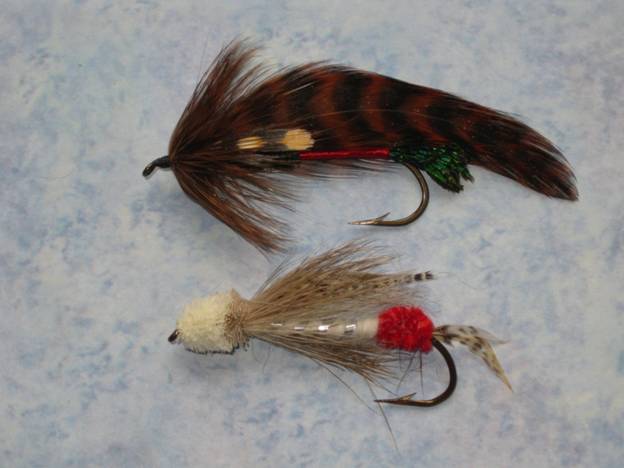
A Dark Spruce Streamer and a Missoulian Spook
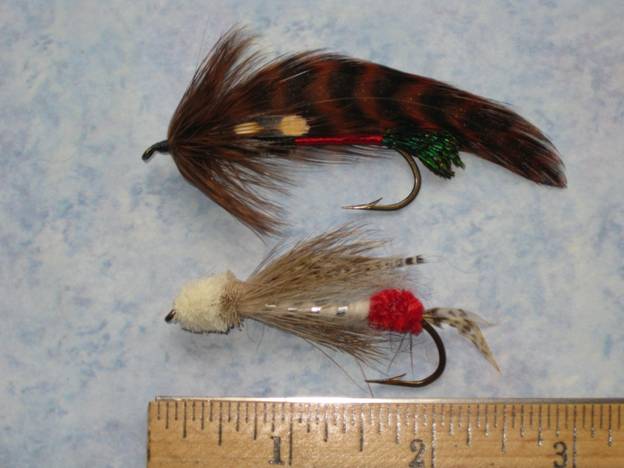
These are BIG flies
While I have given up purposely pursuing big fish I always enjoy the chance encounter with a bragging sized fish. In reality, I think that most of the fish that I catch are representative of the fish that most anglers catch. A 20 inch trout is a respectable fish on most trout water and trout in the 21 to 25 inches are big fish. I have caught my share of 20 inch trout, but I have caught far more 12 to 18 inch fish over the course of time. Any day that I can fish over 12 to 18 inch wild trout is a good day.
A couple of seasons back I was fishing with Tom, my nephew, on a relatively small, by western standards, trout stream. The stream contains a mixture of Yellowstone cutthroats, rainbows and rainbow/cutthroat hybrids. It was the fall of the year and the stream was low and clear. By mid-morning we had both caught a few trout in the 12 to 14 inch range, and then a few Gray and Greenish Drakes [S. occidentalis, E. hecuba – now T. hecuba] began to emerge. Tying on a size 10 extended body drake imitation I proceeded to hook and release several fish in the 18 to 23 inch range. [Measured not estimated] They were hog fat from a summer of feeding and in the cooler fall water they were truly worthy opponents. It was an unexpected treat.
Like catching trout feeding selectively to midges in gin clear water, fishing for large trout is a specialized form of fly fishing. I have opted for catching the occasional large trout while in pursuit of the more prolific smaller fish, but I have no less respect for those anglers that choose to pursue larger fish. Theirs is often a lonely and frustrating quest and I wish them well.
